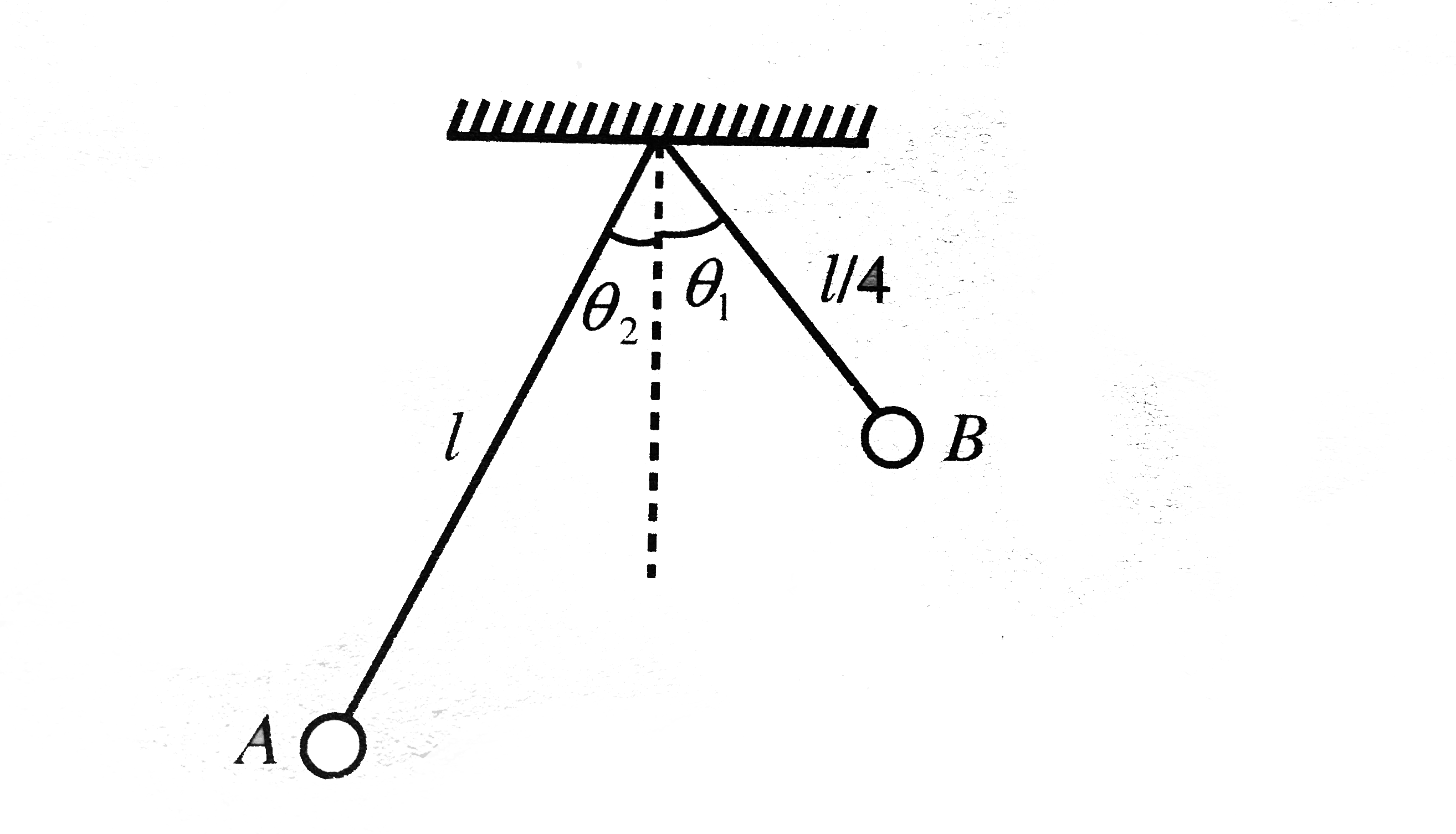Two simple pendulums A and B have lengths 1.0 m and 4.0 m respectively at a certain place. Which pendulum will make more oscillations in 1 minute ? Explain your answer.
To determine which pendulum will make more oscillations in one minute, we need to analyze the relationship between the length of the pendulum and its time period.
1. Understand the relationship between length and time period:
The time period (T) of a simple pendulum is given by the formula:
T=2π√Lg
where L is the length of the pendulum and g is the acceleration due to gravity. From this formula, we can see that the time period is proportional to the square root of the length of the pendulum.
2. Identify the lengths of the pendulums:
- Length of pendulum A, LA=1.0m
- Length of pendulum B, LB=4.0m
3. Calculate the time periods for both pendulums:
- For pendulum A:
TA=2π√1.0g
- For pendulum B:
TB=2π√4.0g=2π⋅2√1.0g=2TA
This shows that the time period of pendulum B is twice that of pendulum A.
4. Determine the number of oscillations in one minute:
The number of oscillations (n) made by a pendulum in a given time is inversely proportional to its time period:
n=Total timeT
- For pendulum A:
nA=60sTA
- For pendulum B:
nB=60sTB=60s2TA=30sTA
5. Compare the number of oscillations:
Since nA=60TA and nB=30TA, it is clear that:
nA>nB
Therefore, pendulum A will make more oscillations than pendulum B in one minute.
Conclusion:
Pendulum A, which has a length of 1.0 m, will make more oscillations in one minute compared to pendulum B, which has a length of 4.0 m.
The time period (T) of a simple pendulum is given by the formula:
T=2π√Lg
where L is the length of the pendulum and g is the acceleration due to gravity. From this formula, we can see that the time period is proportional to the square root of the length of the pendulum.
- Length of pendulum A, LA=1.0m
- Length of pendulum B, LB=4.0m
- For pendulum A:
TA=2π√1.0g
- For pendulum B:
TB=2π√4.0g=2π⋅2√1.0g=2TA
This shows that the time period of pendulum B is twice that of pendulum A.
The number of oscillations (n) made by a pendulum in a given time is inversely proportional to its time period:
n=Total timeT
- For pendulum A:
nA=60sTA
- For pendulum B:
nB=60sTB=60s2TA=30sTA
Since nA=60TA and nB=30TA, it is clear that:
nA>nB
Therefore, pendulum A will make more oscillations than pendulum B in one minute.
Pendulum A, which has a length of 1.0 m, will make more oscillations in one minute compared to pendulum B, which has a length of 4.0 m.
Topper's Solved these Questions
- BOOK - ICSECHAPTER - MEASUREMENTS AND EXPERIMENTATION EXERCISE - EXERCISE 1(C) (Mulitple Choice Type)3videos
MEASUREMENTS AND EXPERIMENTATION
- BOOK - ICSECHAPTER - MEASUREMENTS AND EXPERIMENTATION EXERCISE - EXERCISE 1(C) (Numericals)11videos
MEASUREMENTS AND EXPERIMENTATION
- BOOK - ICSECHAPTER - MEASUREMENTS AND EXPERIMENTATION EXERCISE - EXERCISE 1(B) (Numericals)23videos
MEASUREMENTS AND EXPERIMENTATION
- BOOK - ICSECHAPTER - MAGNETISM EXERCISE - EXERCISE-10(B) (Multiple Choice Type)2videos
MAGNETISM
- BOOK - ICSECHAPTER - MOTION IN ONE DIMENSION EXERCISE - EXERCISE -2 (C) ( Multiple choice type :)17videos
MOTION IN ONE DIMENSION
Similar Questions

Two simple pendulums A and B having lengths l and l4 respectively are released from the position as shown in Fig. Calculate the time (in seconds) after which the two strings become parallel for the first time. (Take l=90π2m and g=10ms2.View SolutionTwo simple pendulums of length 0.5 m and 20 m, respectively are given small linear displacement in one direction at the same time. They will again be in the phase when the pendulum of shorter length has completed oscillations.
View Solution
Knowledge Check
- Question 1 - Select One
Two pendulums differ in lengths by 22m. They oscillate at the same place so that one of then makes 30 oscillations and the other makes 36 oscillations during the same time. The length ( in cm) of the pendulum are :
A1. 72 and 50B2. 60 and 38C3. 50 and 28D4. 80 and 58 - Question 2 - Select One
Two pendulums differ in lengths by 22cm. They oscillate at the same place so that one of them makes 30 oscillations and the other makes 36 oscillations during the same time. The length ( in cm) of the pendulum are :
A72 and 50B60 and 38C50 and 28D80 and 58
Two simple pendulums A and B have equal lengths, but their bobs weigh 50 gm and 100 gm, respectively. What would be the ratio of their time periods? Give reasons for your answer.
View SolutionCompare the time periods of two simple pendulums of length 1 m and 16 m at at place.
View SolutionCompare the time periods of two pendulums of length 1 m and 9 m.
View SolutionTwo simple pendulum have lengths land 25l16 . At t=0 they are in same phase after how may oscillations of smaller pendulum will they be again in phase for first time ?
View SolutionTwo simple pendulums have time period 4s and 5s respectively. If they started simultaneously from the mean position in the same direction, then the phase difference between them by the time the larger one completes one oscillation is
View SolutionTwo pendulums differ in lengths by 22m. They oscillate at the same place so that one of then makes 30 oscillations and the other makes 36 oscillations during the same time. The length ( in cm) of the pendulum are :
View Solution

